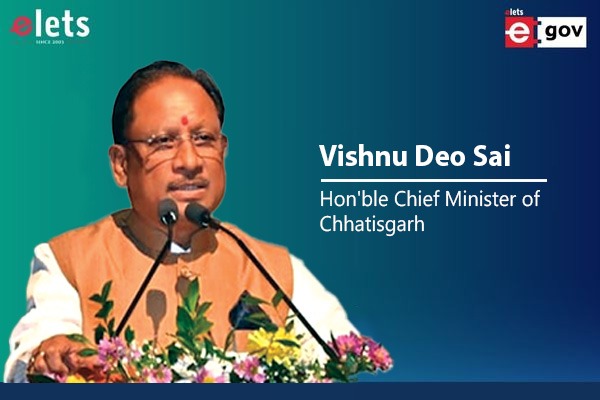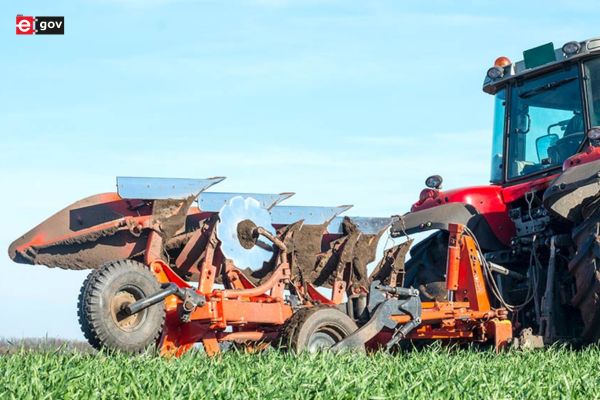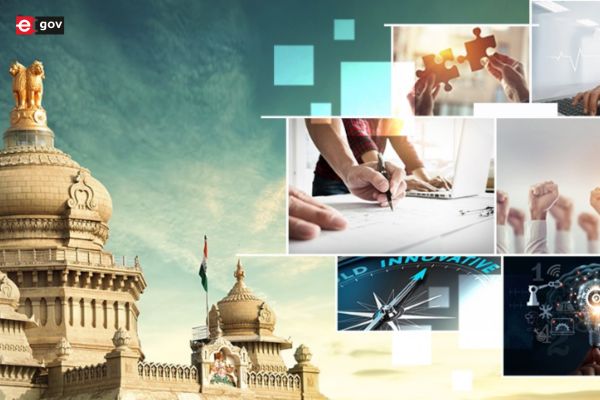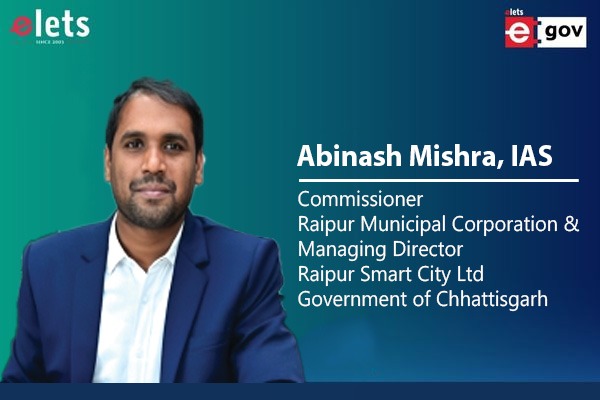India’s soul lies in its villages where 70% of population resides at present. The Government of India and various State governments spend a lot of money for rural development. After more than 50 years of independence, the rural villages have come up with many developmental programmes but still continue to lag behind in terms of desired progress. Expectedly, this may be because of the lack of proper monitoring of these developmental projects due to some age-old methodology of manual system. However, now things have changed for good. Of late, a new form of government, popularly referred to as e-Government, has emerged as a new way of reaching out to the people.
The rural development programmes in India are executed and monitored by the 3-tier Panchayati Raj Institutions (PRIs). The objective of these rural development programmes can be achieved only if the execution and monitoring can be done in more effective manner, which is possible only through the use of ICT. In retrospect, the Ministry of Panchayati Raj, Government of India, recommended the use of ICT in PRIs during its 7th Round Table Conference held from 17-19 December 2004 at Jaipur in Rajasthan.

Accordingly, the Government of Orissa has taken this as a mission mode project and implemented some e-Governance applications for transparent and effective management of PRIs. The project includes applications like Priasoft that monitors financial position of PRIs; Ruralsoft that gives the picture of physical progress of projects implemented at the village level; PAMIS that keeps track of day-to-day financial transaction with cashbook generation; and, BETAN that is implemented to prepare the salary.

Panchayati Raj

Every village ought to be a republic …with the authority and resources to realise the potential for economic and social development of the village” – This was the vision of Mahatma Gandhi, Father of the Nation, for a vibrant democracy in India. This vision of Mahatma Gandhi was ultimately realised through the Constitutional amendment of Article 243G of Part IX of the Indian Constitution during the tenure of the then Primer Minister Rajiv Gandhi, which empowers the Panchayati Raj Institutions (PRIs) to function as “Institutions of self-government” to plan and implement programmes of economic and social justice.

The PRIs were introduced through the 73rd Amendment Act, 1992, as an enhancement to the democratic set-up of the country below the level of states. The Act was a landmark in decentralized development as it envisions grassroots people’s participation in the process of planning, decision-making, implementation and delivery. However, the constitutional provision by itself has failed to bring about this revolutionary transformation due to the failure of many state governments, who were unable to follow it in letter and spirit. More than a decade has passed ever since the 73rd Amendment came into force but effective implementation of Panchayati Raj in many states is yet to fructify. However, the formation of a separate Ministry of Panchayati Raj (MoPR) under the Government of India in 2004 has instilled hopes of realising the dream of “Poorna Swaraj through Gram Swaraj”. Particularly, the scope for ensuring effective performance of the PRIs has considerably increased with the emergence of e-Governance due to the advent of ICT and the Internet., The MoPR has recommended the use of ICT in PRIs in the 7th Round Table Conference held in Rajasthan in 2004.
The development programmes in the country are designed to meet the objectives of alleviating poverty and area development with an ultimate aim of improving the standard of living. The planning, implementation and monitoring of such developmental activities is extended through PRI to ensure maximum participation of people. The PRIs have the responsibility of creating and maintaining the basic amenities, alleviating poverty and building up of developmental infrastructure. This is being accomplished by self-initiatives of PRIs or state and centrally sponsored schemes, which are implemented through rural local bodies such as Village/Gram Panchayat, Panchayat Samiti/Block Panchayat and Zilla Parishad/District Panchayat in the rural areas. Effective management of funds provided to PRIs by various agencies is one of the most challenging tasks. The Eleventh Finance Commission gave a serious consideration to this aspect and recommended IT-based solution for fund management.
Initiatives in Orissa
The Panchayati Raj department, Government of Orissa, has successfully implemented some ICT-based applications as a part of e-Governance initiative in the state. The Department has introduced e-Governance applications such as PriaSoft, RuralSoft, PAMIS and BETAN.
PriaSoft
The Panchayati Raj Institution Accounts Monitoring Software or PriaSoft (http:// ori.nic.in/priasoft) is a web-based e- Governance application designed and developed by National Informatics Centre (NIC) for the purpose of monitoring of funds at 3-tier PRIs under different account heads in the shape of P. L. Account (not in Village Panchayat), Bank, Cash and advance on a month-end basis. It also contains the database of all Self- Help Groups (SHGs) created under different key activity besides monitoring the financial health of each SHG in the shape of different savings, advance and stock position.
PriaSoft empowers the administrators to monitor the fund receipt, expenditure and availability at all levels of three-tier administrative set up of PRI. It generates a number of reports and has a module that gives the data entry status. The software is designed so as to allow addition of new account heads at the state level as and when required. It provides financial status of each 6578 (30 District + 314 Block + 6234 GP) PRI on public domain over Internet.
The PriaSoft architecture has two modules namely Citizen section (G2C) and Government section (G2G). Citizen section provides financial information to the public whereas Government section captures data and generates MIS reports in the specified format as per requirement at the state, district, block and GP level. The account is maintained under three layers of account heads— Major account, Sub account and Minor account for all 3-tier PRIs namely District Panchayat, Block Panchayat and Village Panchayat. The Major account head covers all the rural development schemes. Currently, there are 84 major account heads at the district level, 66 at the block level and 24 at the Village Panchayat level. There are four sub account heads namely P. L. Account, Bank, Cash and Advance at the district and block level while three sub account heads at the Village Panchayat level. There are two minor heads namely inflow and outflow at all the three layers.
The Public domain deliverable provides the financial position of each PRI (30 district + 314 block + 6234 GP) on monthly basis under different Major account/schemes. Orissa is the first and perhaps the only state in the country where this information is available in the Public domain over the Internet. Under the Government domain, each PRI has been given a user ID and password. Major account heads are created at the state level. The software has an analytic module, and provides the facility to monitor the data entry status at the next higher levels. State user has the privilege to monitor all three layers, district user can monitor two layers below it within its domain and the block user has the permission for GP layer within the block. The report module generates reports on different parameters. The reports are designed as per the need of state, district, block and Gram Panchayat levels. The SHG Module provides financial status of SHGs, and also gives the bankwise loan position under different key activities.
RuralSoft
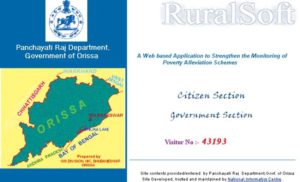 RuralSoft (http://ori.nic.in/ruralsoftr) is a web-based e-Governance application designed and developed by the NIC for monitoring the physical progress of the rural development projects being implemented at the village level. The RuralSoft architecture has two modules namely Citizen section (G2C) and Government section (G2G). Citizen section provides physical status of rural development projects implemented at the village level whereas Government section captures data and generates MIS reports in the specified format as per the need at the state, district, block and GP level. The rural development projects are implemented by all the 3-tier of PRIs. The details of projects are captured from all three levels in the prescribed format that includes Name of the Scheme from where money has been sanctioned (SGRY/IAY/ MPLAD/MPALAD etc.); Name of the project; Description of the project; Location of the project; Amount sanctioned; Date of commencement; Man-Days generation; Status of the project; Date of completion; and Sanctioned financial year. Besides, it has also the provision of capturing the information from DRDAs in the format prescribed by the Government of India for Monthly Progress Report (MPR) for schemes like IAY, SGRY, SGSY and NFFW.
RuralSoft (http://ori.nic.in/ruralsoftr) is a web-based e-Governance application designed and developed by the NIC for monitoring the physical progress of the rural development projects being implemented at the village level. The RuralSoft architecture has two modules namely Citizen section (G2C) and Government section (G2G). Citizen section provides physical status of rural development projects implemented at the village level whereas Government section captures data and generates MIS reports in the specified format as per the need at the state, district, block and GP level. The rural development projects are implemented by all the 3-tier of PRIs. The details of projects are captured from all three levels in the prescribed format that includes Name of the Scheme from where money has been sanctioned (SGRY/IAY/ MPLAD/MPALAD etc.); Name of the project; Description of the project; Location of the project; Amount sanctioned; Date of commencement; Man-Days generation; Status of the project; Date of completion; and Sanctioned financial year. Besides, it has also the provision of capturing the information from DRDAs in the format prescribed by the Government of India for Monthly Progress Report (MPR) for schemes like IAY, SGRY, SGSY and NFFW.
PAMIS
Panchayat Accounts Monitoring Information System or PAMIS is a webbased as well as desktop application developed by Xavier Institute of Management, Bhubaneshwar (XIMB) for the Panchayati Raj Department. The platform is Oracle 9i and D2K. PAMIS is capable of capturing each transaction of DRDAs/Blocks, and is based on double entry system wherein daily transactions can be entered. Cash Book as well as Journals can be generated through the package. The package has been implemented to standardise the accounting system of all the DRDAs and the Blocks to save delay and better transparency. The package is being used in 30 DRDAs and 314 Blocks.
BETAN
BETAN is an integrated Pay Roll package developed by OCAC (Orissa Computer Application Centre, Bhubaneshwar) for the Department. The platform is Oracle 9i and D2K. The objective is to save time and manpower in preparing the repetitive Pay Bills, have a standard format for all the employees of DRDAs and Block level officials. The package is being currently used in 30 DRDAs and 314 Blocks.
Data Web Hosting
Information can now be accessed regarding villages with demographic details, which are now Panchayat compliant. Rural BPL Household Survey was conducted in 2002 and the collected data were put in the database. The total household survey is now available on the Internet and can be accessed by the public. Reports are available at http:// rural.nic.in, while individual details with village-wise list at http://ori.nic.in/bpl. Gram Chahat package is being developed to enlist prospective job seekers available at the village level. Besides, other departments are being encouraged to use INDIA village database to ensure wide dissemination of information to the public for better transparency and accountability.
GRAMSAT VSAT Network
All the 30 DRDAs and 314 Blocks have been connected over VSAT connectivity. All the DRDAs and Blocks have been provided with email accounts for mail transactions. Interactive Training Programmes over GRAMSAT were conducted for sorting out the difficulties at the DRDA and Block level.
Panchayati Raj-related Portals
Panchayati Raj Department Portal (http:// orissagov.nic.in/panchayat/default.asp) has been hosted by the Government of Orissa, and contains links to all major government sites besides all information related to PRI act, rules, elected members list etc. The Panchayati Raj Department in the State has also hosted the DRDA Portal (http://ori.nic.in/drdaportal) using e-NRICH developed by the NIC for creating a standard portal for all the DRDAs of Orissa. e-NRICH has the feature of remote content management. The Ministry of Panchayati Raj, Government of India, has hosted National Panchayat Portal or NPP (http:// panchayat.nic.in) using e-NRICH developed by the NIC for creating portals for all the 3-tier PRIs, with remote content management feature. Orissa is the first and perhaps the only State in the country to upload information on this portal.
Conclusion
All these however could be achieved through consistent hard work and a willingness to achieve after undergoing the resultant pain. It is now a widely acknowledged fact that rural prosperity and sustained growth can only be achieved through land reform and decentralisation. As such, the advent of ICT has truly changed the roles people and PRIs are playing in Orissa. The rural populace cannot merely achieve prosperity just only because of the mandatory 100 days of wage employment to 74 lakh rural household who are at bottom of pyramid with minimum wage under NREG Act 2005, but the use of ICT has a lot more to do with it.
Be a part of Elets Collaborative Initiatives. Join Us for Upcoming Events and explore business opportunities. Like us on Facebook , connect with us on LinkedIn and follow us on Twitter, Instagram.
"Exciting news! Elets technomedia is now on WhatsApp Channels Subscribe today by clicking the link and stay updated with the latest insights!" Click here!







